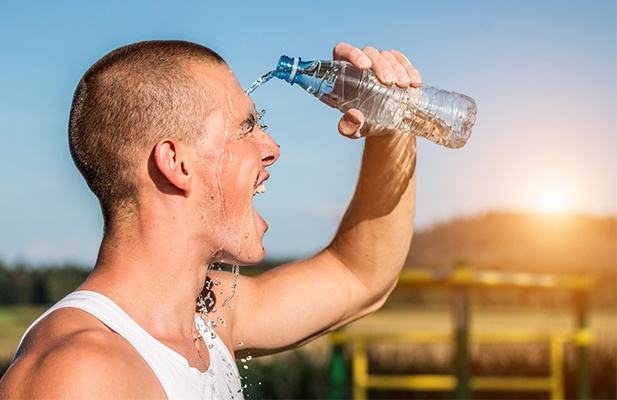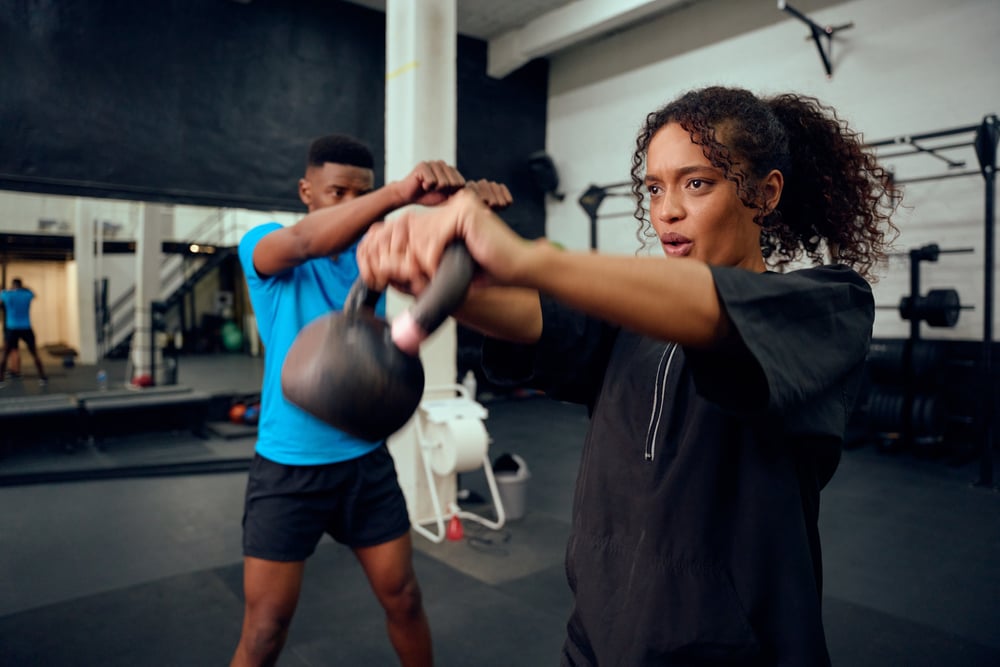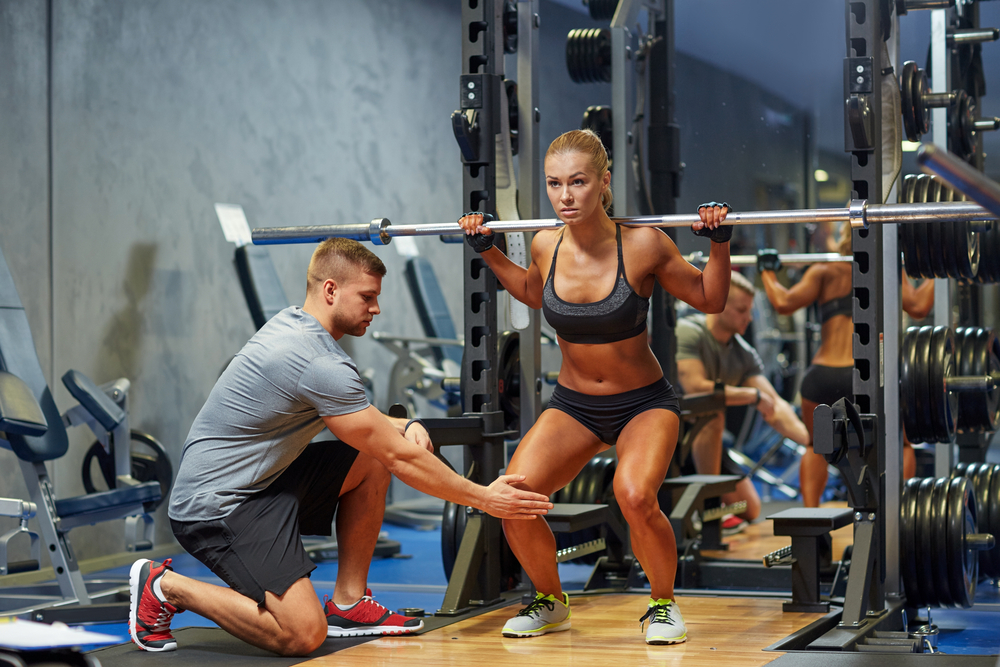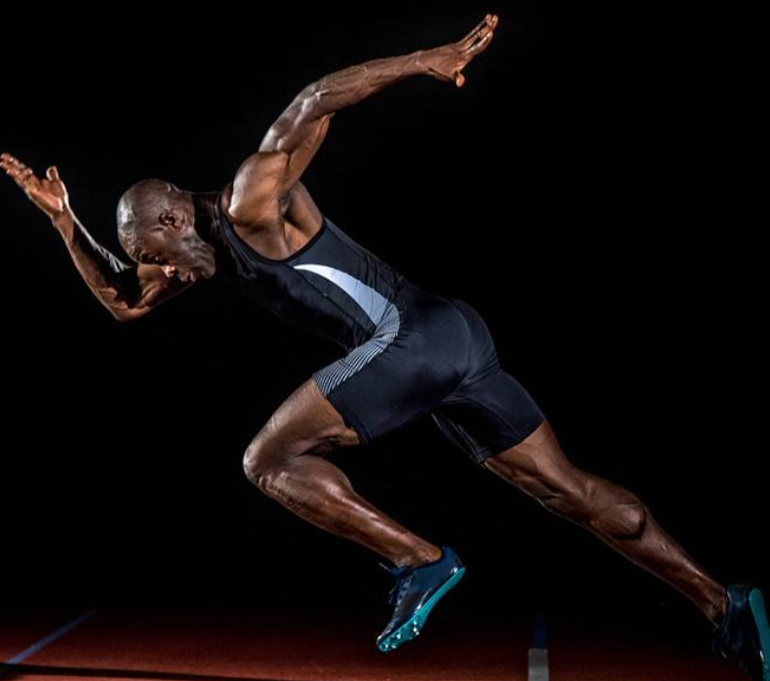
Strenuous exercise raises your core body temperature, and activates the natural cooling system. While there are many processes involved in regulating the body temperature, to put it simply: the body begins to sweat, and the process of sweat evaporating off the skin lowers the skin temperature. This lowered skin temperature cools the blood as it travels from your extremities back to your heart, which in turn lowers your core temperature.
When you exercise in hot weather, your body temperature rises faster and gets hotter, so the natural cooling process is more taxing, stressing the body more than a workout in average temperatures. Also, when the weather is humid, the evaporation process is slowed because the air doesn't absorb fluids from the surface of the skin as readily. This makes training in hot weather more difficult and potentially more dangerous, and it's important to protect yourself during your training regimen. Here are some ways to protect yourself:
Hydrate all day
The body requires water for circulation, oxygen delivery, and vital cellular and organ functions. In hot weather, more fluid is lost to evaporation, depleting the body of necessary fluids. Hydrate all day, in preparation for training, and then to restore lost fluids afterward. Losing as little as 2% body weight in lost fluids can begin to impair performance due to dehydration. Weigh yourself before and after a workout to determine how much fluid you lost to sweat, and then drink about 25-50% more than the depleted amount, in order to reach full hydration.
Run at the right time of day
During hot summer months, run early in the morning, before the sun rises above the horizon. In areas of high humidity, the lowest humidity is generally just before dawn. Running early in the morning is cooler, more comfortable, and protects the body from excessive heat.
Wear appropriate clothing
Wear loose-fitting clothing, textured fabrics, and avoid cotton. Tight fits, smooth fabrics, and cotton fibers will cling to the skin when wet and inhibit evaporation. Modern fibers have been engineered to accelerate cooling and release moisture, so invest in some high-tech clothing.
Wear sunscreen
Sunscreen protects the skin from the damaging effect of the sun, but look for one that won't clog pores and prevent natural cooling from sweating. There are sunscreens specifically designed for outdoor sports, that keep protecting from sun when you sweat, but also allow moisture to evaporate from the skin.
Acclimate to the heat
If you are looking ahead to training in a long hot summer, take time to acclimate yourself. Exercise for at least an hour a day, but at only moderate intensity. After about two weeks, your body temperature and cardiovascular system will adapt to the heat, and you can begin to increase the intensity of your workouts. Note that these adaptations are temporary: after a couple weeks of training in moderate or cool temperatures, your heart rate and sweat response will return to normal.
Consume electrolytes
It's not just water that is evaporated away with sweat, it is also sodium and other essential minerals. While most of our electrolytes are supplied with good nutrition and lots of water ahead of a workout, they are rapidly depleted during strenuous activity. Drinking sports drinks with electrolytes helps to restore and replace these necessary minerals and protect the heart. Some runners lose more minerals in sweat than others: after a run, take off a sweaty shirt and let it dry naturally. If you see white residue on the dry fabric, you know that you are losing electrolytes during your workouts. If you are a serious athlete, we even recommend integrating IV hydration therapies to your hydration and recovery regiment.
Following these steps will help protect you from training in hot weather, preserving your health and your performance all summer long.








